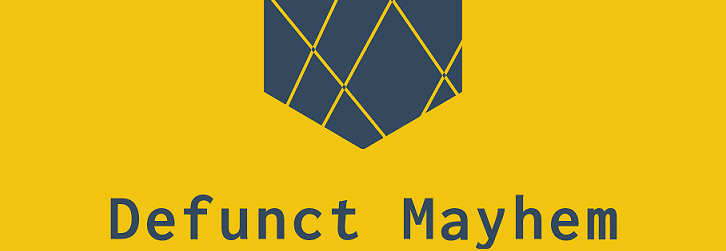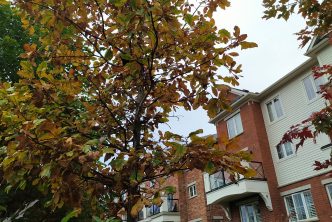I would ask you to bear with me as I work my way through this idea:
Peaceful protest is dead.
Maybe not entirely, but certainly in the traditional, over-romanticized context.
As I write this it is Saturday January 28th 2017. One week ago yesterday Donald Trump was sworn in as Commander-in-Chief of the United States. Within the last week the Environmental Protection Agency has been silenced, Trump has antagonized China, frozen the funds Obama tried to send to Palestine, stood silently as Israel announced plans to expand further into the West Bank against the wishes of the U.N., announced a continued plan to build a “wall” along the U.S./Mexico border, began dismantling the Affordable Healthcare Act, initiated anti-Planned Parenthood protests, approved the Dakota Access and Keystone XL Pipelines, and more (that was all just off the top of my head). Through it all the chief story in the news has been about how big the crowd at the inaugural ceremony was.(for a relatively thorough summary of the first week, this video does a good job: click here).
The day after the inauguration women and men marched against Trump in The Women’s March – a post-inaugural protest that originated in Washington D.C. and grew to be a global movement. The women who marched last Saturday had a number of reasons. Trump’s administration includes men who vouch for electro-shock conversion therapy, passed the infamous bathroom bill, are cite-able racists and KKK supporters, anti-abortion activists and verifiable bigots. There existed a menagerie of reasons to march through streets, hold signs, yell, sing, and do much more. In major cities, small towns, growing suburbs, and sprawling metropolis people marched while wearing pink and letting their distaste be known. It was inspiring to watch, participate in, or see pictures of if your political views aligned with those marching.
The Women’s March closely follows months of a periodically publicized standoff in North Dakota where pipeline protesters had been camped out since the spring of 2016. In late 2016 Obama issued an executive order to the Army Corps of Engineers to halt construction on the Dakota Access Pipeline (undone, of course, by Trump). The protesters who had been brutalized by the weather, tear gas, water cannons and angry comments were justified in their actions for a short time. In addition to the real human beings sitting in the cold for what they believed in, the anti-pipeline campaign “No DAPL” featured one of the greatest examples of armchair activism since the world went crazy for Kony. A message circulated on Facebook and Twitter saying that State Police were using Facebook to track and identify protesters at the No DAPL sit-in. It urged the average person to “Check in at Standing Rock” in an effort to throw off “the man” from knowing exactly who was actually physically opposing “him”. The story seemed to prove that the kind of protest pioneered by MLK and Gandhi can really work.
As great as it is that these kinds of protest still happen, do they really work?
Now, I understand that protests as significant as these raise awareness of issues. Sure. What worries me, and where I feel that we’ve lost sight of what change can look like, is that most protests, if they are peaceful – especially in America – harken back to Martin Luther King Jr.’s movement. I would hope that most people know his story, so let me sum up the problem for you in a few words.
In the period during which King is famous for, peaceful protest had proved to be the most radical form of protest. Instead of instigating riots in the name of race, people sat on buses (Rosa Parks), existed in restaurants, walked over bridges, yelled inspiring words that meant something and just generally did the opposite of what was expected while challenging the people in power to confront segregation head on forcing them to attempt to justify the unjust or come to their senses.
Today, we expect all that. You have an issue? Just go hold a sign. You think something is unfair? Sit in front of some politicians door and maybe it’ll be mentioned in the news. We still see pictures of brutalized protesters today, just look at No DAPL and Sophia Wilansky who nearly lost her arm to an explosion, but it has less impact if it’s not accompanied by anything else. Now let’s look at the impact these examples have had while introducing two more famous protests.
I want to get back to the impact the Women’s March had later for a couple reasons: 1. It’s pretty early to tell, 2. I have a criticism unique to that protest.
The No DAPL protest, at this point was unsuccessful, in the same way the Keystone XL protest in Canada has been. Regardless of whether or not the protest was news-ified or was about human rights, oil spills, or clean water, the pipelines will happen.
The peaceful protests in the ‘50s and ‘60s were controversial, and at the time were vehemently condemned by the political class. It was a new technique, it was radical.
The Black Panthers fought the same battle as Martin Luther King, but in their own way. Led by Huey P. Newton, they took a peaceful route, however instead of marching unarmed, they carried weapons. They would carry them in the open, down public streets. As citizens of America, they had the right to bear arms, but would be confronted differently by the police than unarmed protesters. The grassroots movement of the Black Panther party, sprung from the ideals of equality and, radical, political, student thought. Their protest eventually fizzled out. They were being radical, but only until the leather-bound, gun-wielding men were normalized.
In 2014 in Ferguson, Missouri, a man named Mike Brown was shot and killed by a local police officer for shoplifting petty items from a local convenience store. Although Mike Brown might have been in the wrong, his death was uncalled for, and unjust, and the country quickly came to realize that it was a big deal. Unlike in the 1960’s there are more significant parts of the country, and continent, which will not stand for the outdated, ignorant racism that still exists prominently throughout many states. The modern advocates flocked to Ferguson and hoped to cement the event in history as a pivotal point in the civil rights movement. The protest in Ferguson, although peaceful during the day, was riotous at night. The Ferguson riots, as they happened drummed up not only conversation about the abhorrent class and racial problems in America, but like the radical protests in the ‘60’s and the temporary success of the No DAPL, politicians were compelled to do something to stop the riots, however, police investigations and apologies were only a small step. The issues at hand were significant and are the same problems that have been plaguing humanity for thousands of years: poverty, racism, bigotry.
Let’s take the whole point here back to what essentially amounts to my thesis: peaceful protest is dead.
Let me list the major political movements of the recent past I just mentioned: Ferguson, No DAPL, Kony 2012, Keystone XL, the Women’s March. Each of the latter was well-intentioned, addressed serious issues, and involved thousands of people, but Missouri is still racist, Kony is still out there, the pipelines are still being built and, fucking Trump is still a bigot in charge of other racist bigots. Plus, Trans people are still not allowed to use the bathroom they want to in North Carolina.
So we know about the problems, big whoop. The civil rights movement in the ‘60s through peaceful protest, charismatic leaders, and in-your-face social activists did achieve legitimate legislative change, but I realize they did not fully eradicate the problems they faced. It seems to me, the arm chair critic of America that I am, that peaceful protest has been normalized beyond the point of being useful as an individual tool.
Do I have a solution? A suggestion? Yeah, mostly.
There are always going to be political issues somewhere. Peaceful protest is a good thing. It allows people to voice their disappointment in the system, but on its own it impacts very little. Even less impactful is social media activism, it’s been said before so I’m not going to go into detail, but that shit just doesn’t mean much on its own. A like or a fave is just dust in the wind of the matter.
Solutions? I don’t have any. That would be awful for me to try to solve.
Suggestions? I’ve got some.
Do something else. Anything else in concert with a protest. Call a representative on the municipal, State/Provincial, or Federal level. As I reflect on the past, it seems that those causes that succeed in their protest are ones that involve individuals ready to give their lives for what they know to be right. Look at South Africa’s apartheid. Apartheid was horrible, hugely discriminatory, but it was abolished. Protesters waged a veritable war against the oppressive regime in the country. The constant pressure balanced between violence and peace continuously kept the issues in the forefront of international discussion for years.
I’m not an advocate for violent action most of the time, but it has been proven to work, so has peaceful protest, but for both, never alone. Here’s where I bring back the Women’s March.
Like I said, it was fantastic to see so many people marching in solidarity with the not-fucking-deluded majority of American voters however, those hundreds of thousands of people have not been in the street marching all week as Trump’s administration sucks away human rights. The number of people that were in the street last Saturday across the variety of locations had enough human power to force the government to do anything. Just short of a legitimate coup, they could have stormed government buildings and secured their place in history as the people who prevented Trump. I’m not criticizing the movement, but it is interesting to think about what could have happened with more organizing.
With the audacity of the trump administration to keep forcing executive orders on the country and to frighteningly instigate conflict with friendly countries like Mexico and China, the need for protest, and political action is urgent. If you can think of something that is unexpected, a move that seems crazy or untried, that’s probably the way to go. Is it radical? Alternatively, you could make it a hobby to call your local politicians. If enough people do that, there’s got be some unified message that gets through.
Don’t stop protesting what is wrong. If peaceful protest is the most comfortable venue for you, keep doing it, but add in a few calls to your congressman or MP.
Oh! And tell your friends.
Fight Apathy. Fuck Fascists.
Fuck Trump
EDIT: As I write this, news about the immigration restrictions are surfacing on social media. If anything needs to be stopped and protested, it’s that (also Climate Change. Don’t abandon the planet OR its people). If you live in the States or know someone who does, please help. If you feel the need to block transit routes, break infrastructure, yell at congressmen, Tweet at the Child-like-Cheeto-President or otherwise make your voice and absolute shock known, DO IT. This piece was not meant to be negative, just to highlight the importance of protest that is anything BUT peaceful. Protest should be impactful, meaningful, and just, but also disruptive and bothersome.
People need to care. About other people. About the world.






